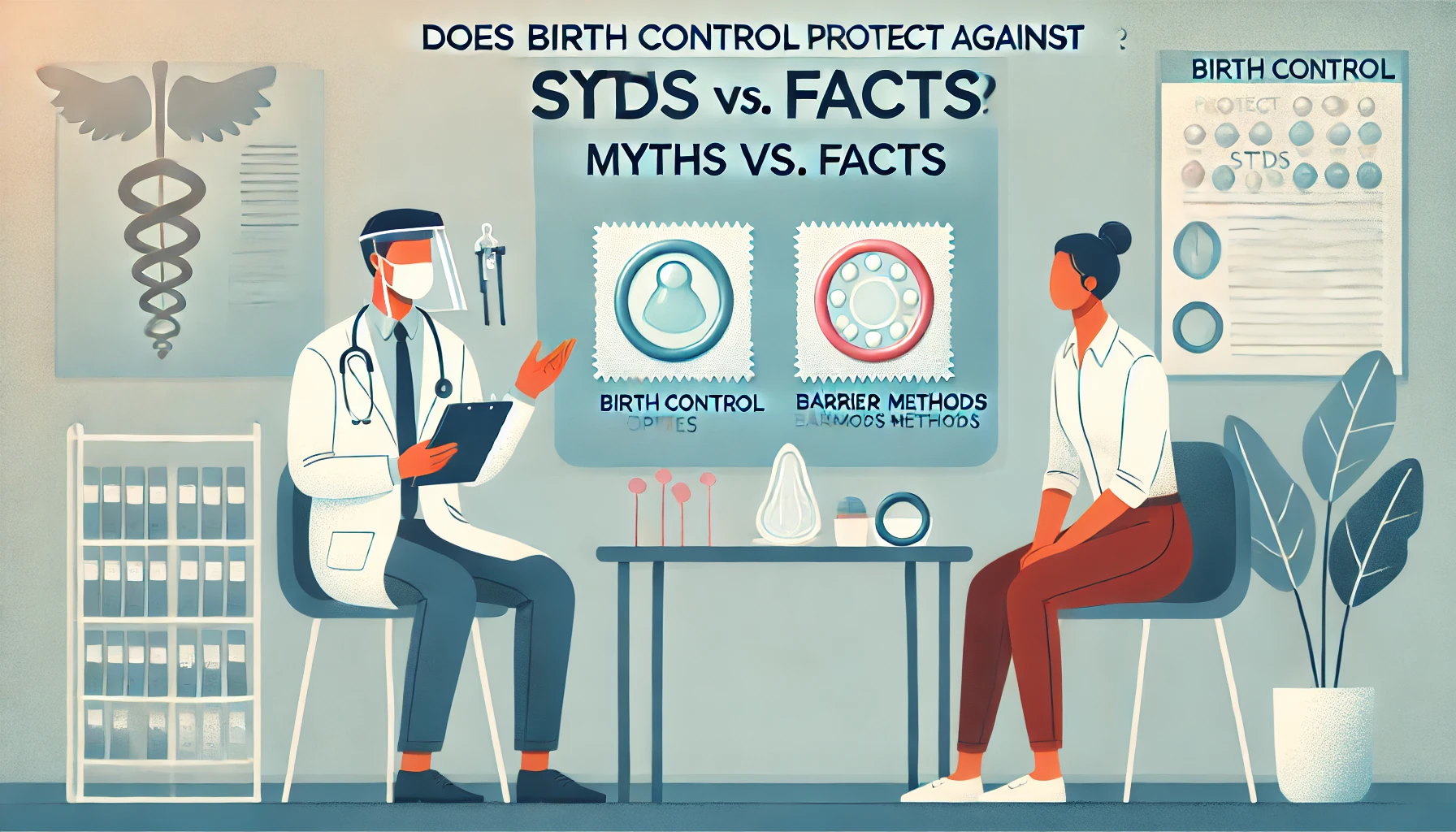Many people assume that birth control methods like the pill, patch, or IUD provide protection against sexually transmitted diseases (STDs), but is that really true? While birth control helps prevent pregnancy, it does not necessarily protect against infections. In this guide, we’ll break down the myths and facts about birth control and STD prevention.
Myth: Birth Control Prevents STDs
🚫 False! Most forms of birth control do NOT protect against STDs. Birth control methods like the pill, patch, implant, shot, and IUD are designed to prevent pregnancy, but they do not stop infections from spreading during sex.
The Truth:
✔️ Only barrier methods like condoms and dental dams reduce the risk of STD transmission.
✔️ Hormonal birth control (pills, patches, shots, IUDs) offers zero protection against STDs.
✔️ You can still get an STD even if you are on birth control.
Types of Birth Control and STD Protection
| Birth Control Method | Prevents Pregnancy? | Protects Against STDs? |
|---|---|---|
| Condoms (Male & Female) | ✅ Yes | ✅ Yes (reduces risk significantly) |
| Birth Control Pills | ✅ Yes | ❌ No |
| IUD (Hormonal & Copper) | ✅ Yes | ❌ No |
| Birth Control Patch | ✅ Yes | ❌ No |
| Birth Control Shot (Depo-Provera) | ✅ Yes | ❌ No |
| Diaphragm & Cervical Cap | ✅ Yes | ❌ No |
| Implant (Nexplanon) | ✅ Yes | ❌ No |
| Spermicide | ✅ Yes (low effectiveness) | ❌ No |
| Dental Dams | ❌ No | ✅ Yes (protects during oral sex) |
💡 Best Protection: Using both a hormonal birth control method AND condoms gives the highest level of protection against both pregnancy and STDs.
How STDs Are Transmitted Despite Birth Control
Even if you’re using birth control, STDs can still spread through: ✔️ Unprotected vaginal, anal, or oral sex.
✔️ Skin-to-skin contact (e.g., herpes, HPV, syphilis).
✔️ Sharing sex toys without proper cleaning or condoms.
✔️ Contact with infected bodily fluids (e.g., semen, vaginal fluids, blood).
Risk Factors That Increase STD Transmission: 🚨 Multiple sexual partners.
🚨 Not using condoms or dental dams.
🚨 Having an untreated STD (which makes transmission easier).
🚨 Using hormonal birth control and assuming you’re fully protected.
How to Prevent STDs While on Birth Control
To stay safe and protected, follow these best practices:
✔️ Use Condoms Every Time – Condoms are the only birth control method that reduces STD risk. ✔️ Get Tested Regularly – If you’re sexually active, routine STD testing is essential. ✔️ Communicate with Your Partner – Discuss testing history and safe sex practices. ✔️ Get Vaccinated – The HPV vaccine protects against high-risk strains that cause cancer and genital warts. ✔️ Consider PrEP for HIV Prevention – If at high risk, pre-exposure prophylaxis (PrEP) lowers the chance of contracting HIV.
What to Do If You Think You Have an STD
If you notice unusual symptoms such as pain, burning, discharge, sores, or itching, you should: ✔️ Stop sexual activity until you get tested.
✔️ Get tested at a clinic or use an at-home STD test.
✔️ Follow treatment instructions if you test positive.
✔️ Inform your partner(s) so they can get tested too.
Final Thoughts
While birth control is highly effective at preventing pregnancy, it does NOT protect against STDs. The only effective way to reduce STD risk is by using barrier methods like condoms and dental dams, regular testing, and vaccinations. If you’re sexually active, make STD prevention a priority—your health is worth it! 💙
References
- Centers for Disease Control and Prevention (CDC). “Contraception and STD Prevention.” www.cdc.gov/std
- Planned Parenthood. “Birth Control and STD Protection.” www.plannedparenthood.org
- Mayo Clinic. “Sexually Transmitted Infections: Prevention and Treatment.” www.mayoclinic.org

Leave a Reply